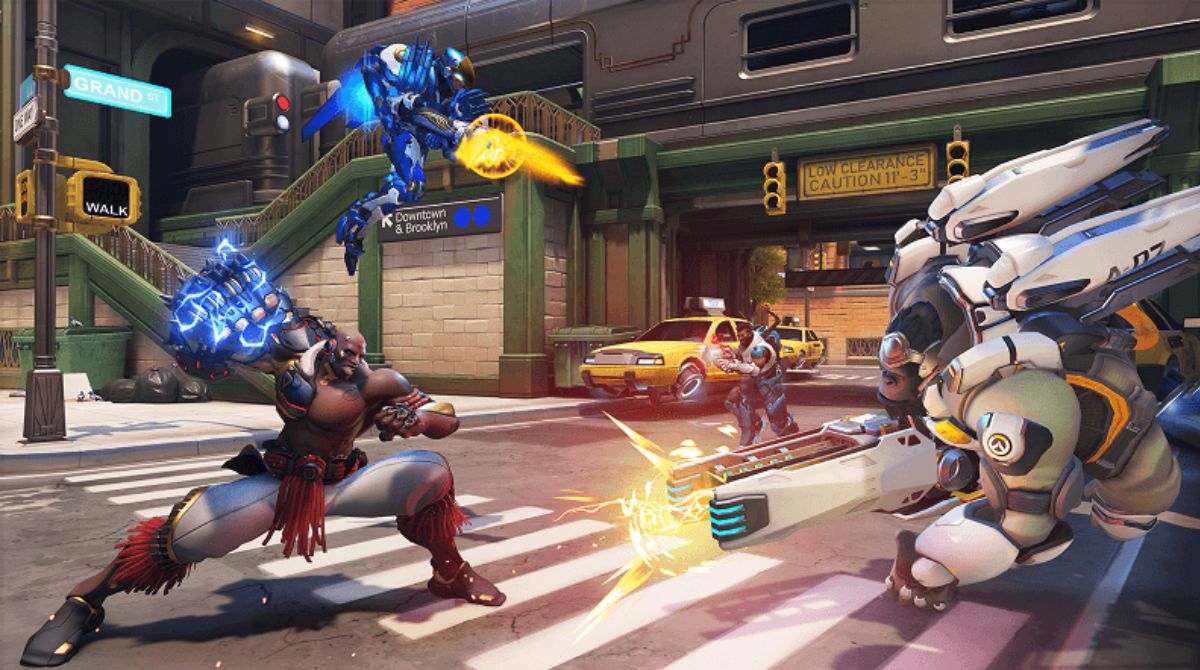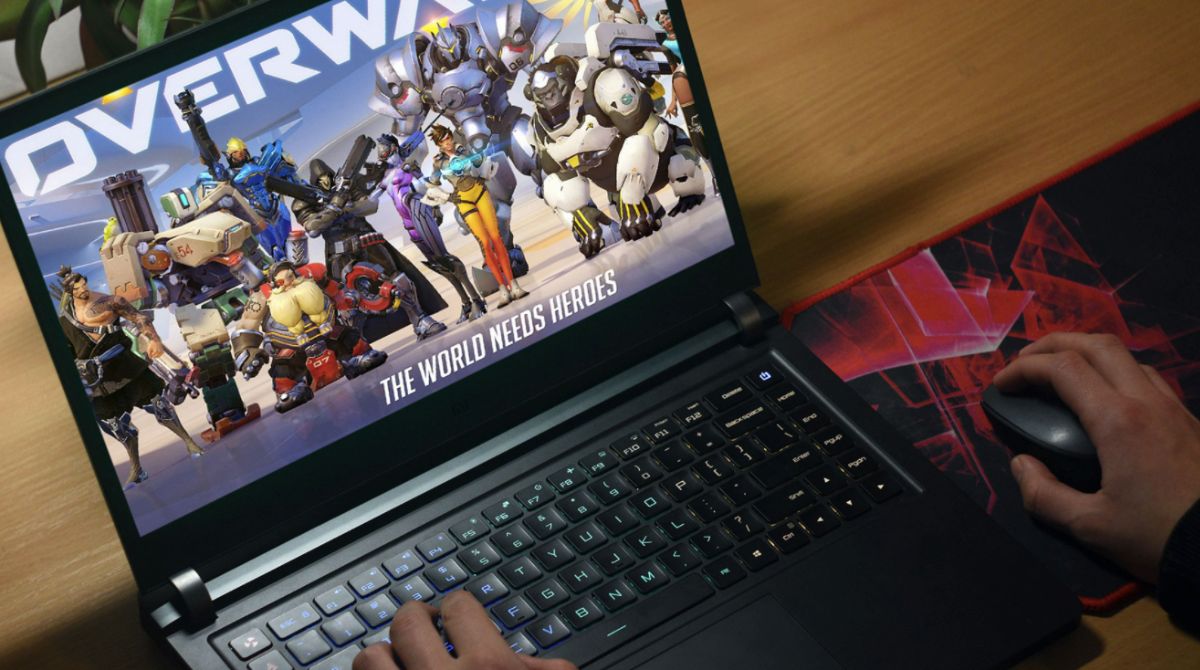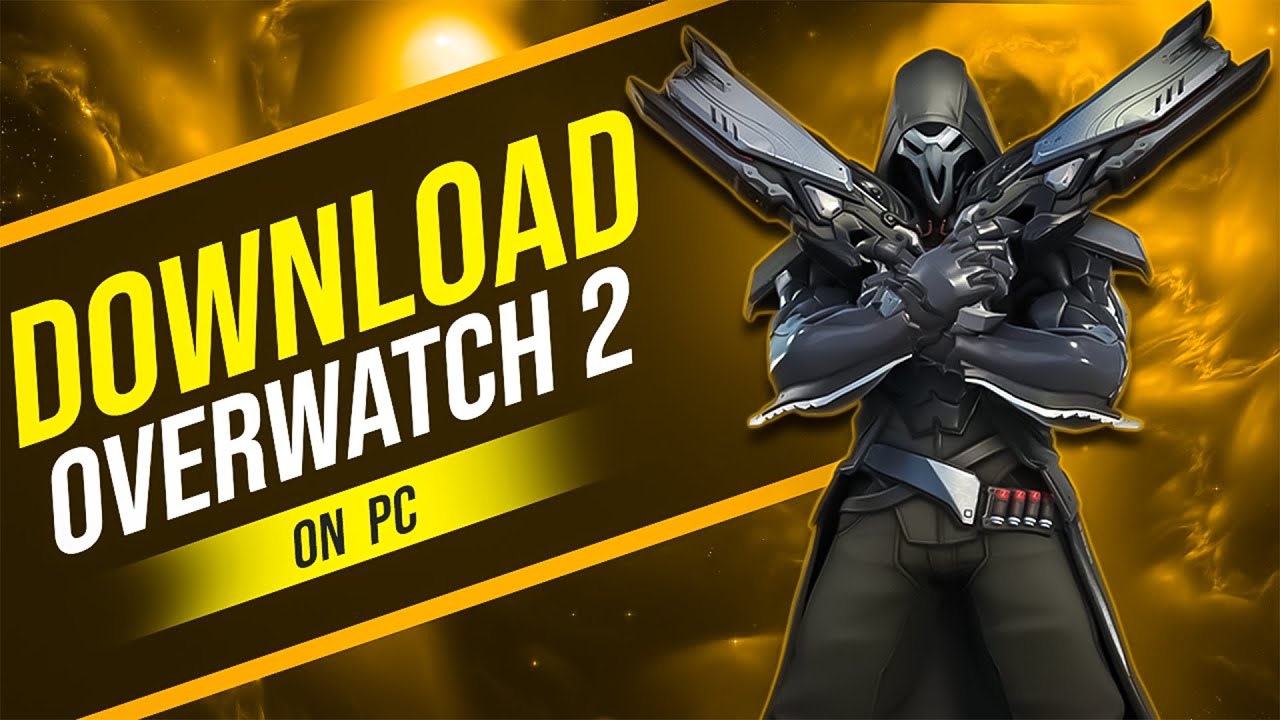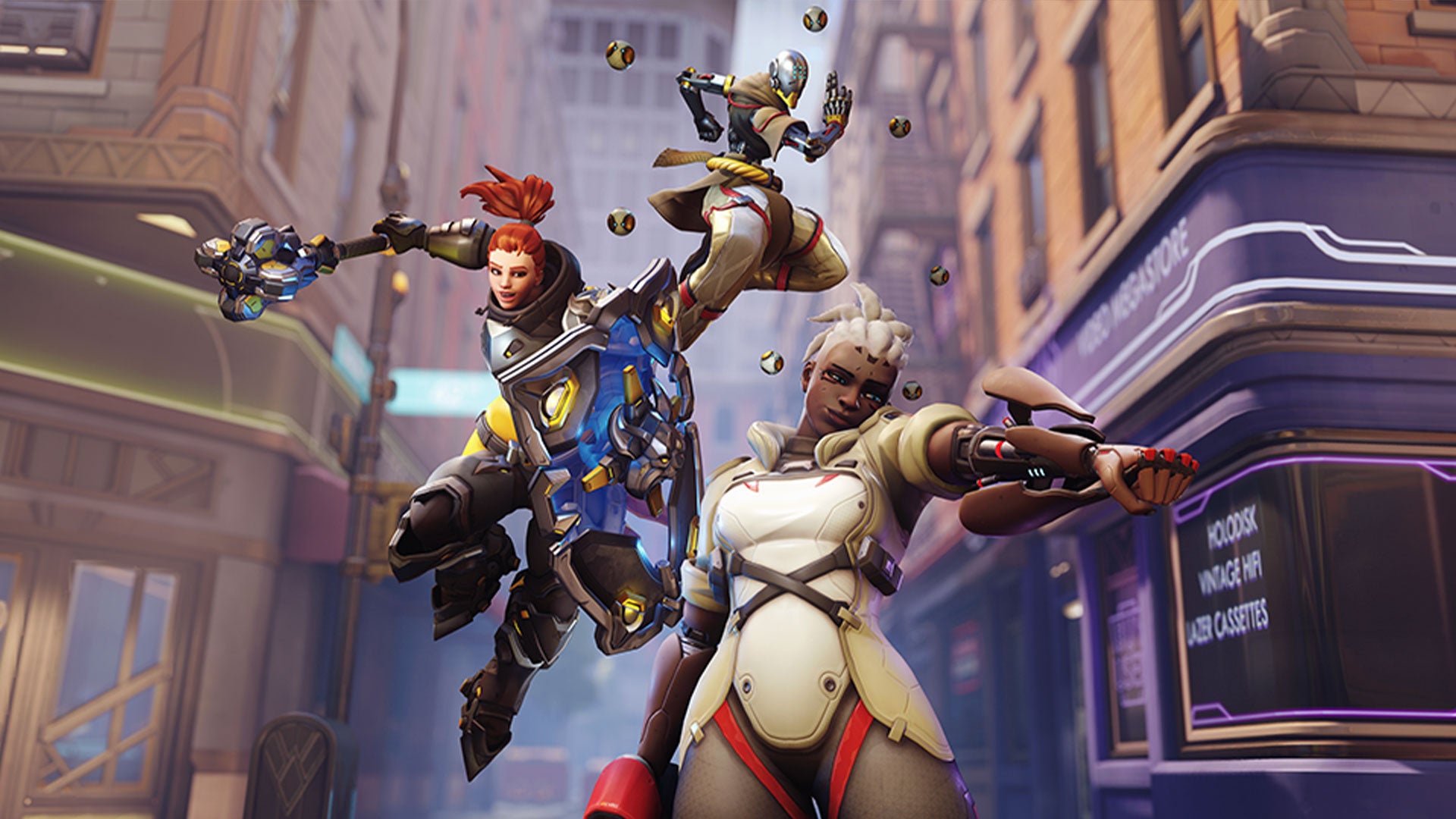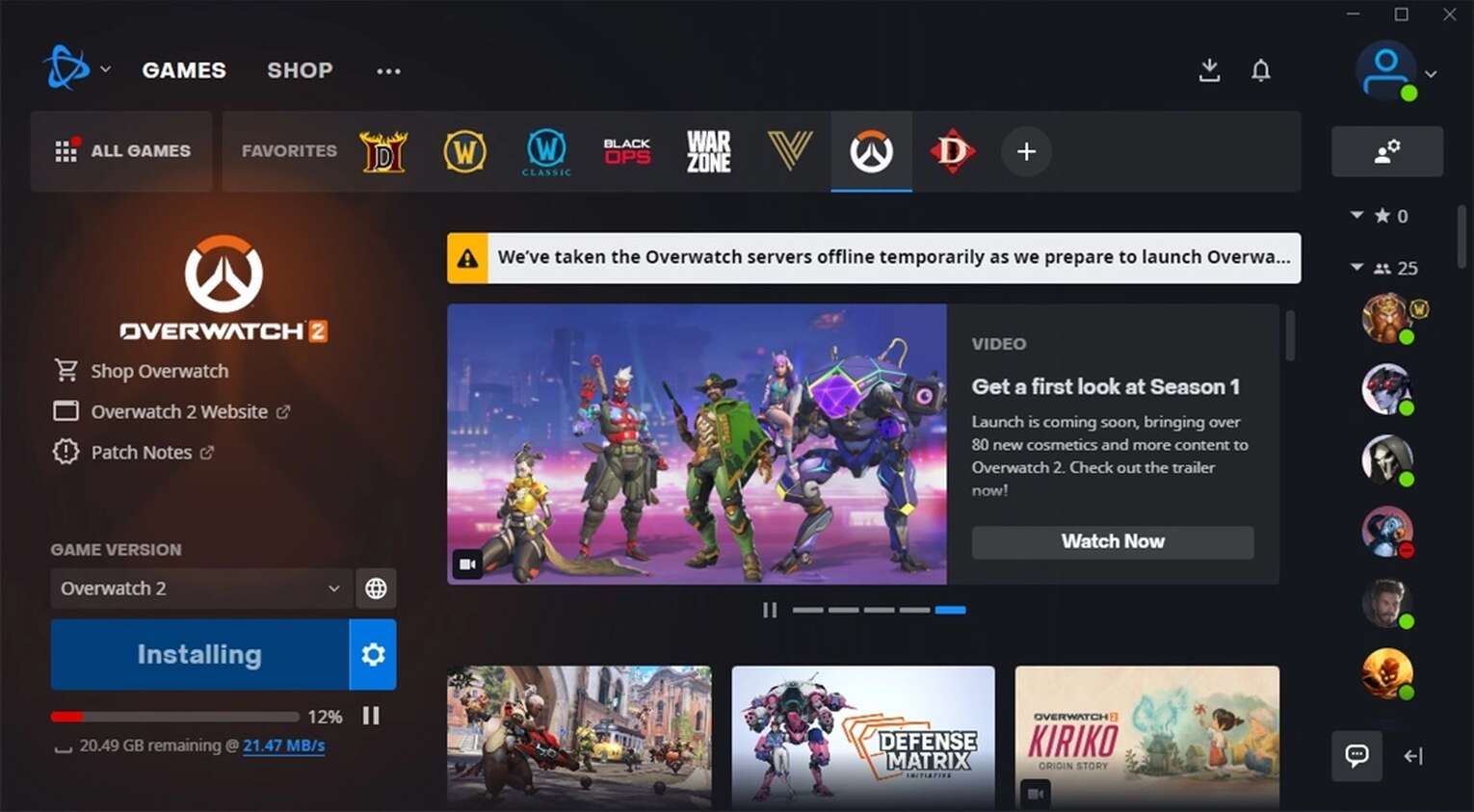Introduction
Welcome to the exciting world of Overwatch 2! As a devoted gamer, you’re probably eager to dive into the highly anticipated sequel to the immensely popular first-person shooter game. However, before embarking on this thrilling adventure, it’s essential to ensure that your gaming setup meets the necessary system requirements.
One crucial component to consider when optimizing your gaming rig is the amount of RAM (Random Access Memory) it possesses. RAM plays a vital role in dictating your overall gaming experience, influencing factors such as loading times, frame rates, and smooth gameplay. Understanding how much RAM you need for Overwatch 2 will help you in making informed decisions to enhance your gaming performance.
In this article, we’ll explore the minimum and recommended system requirements for Overwatch 2, discuss the typical RAM usage in the game, and provide essential factors to consider when choosing RAM. Whether you’re a seasoned gamer or new to the world of gaming PCs, this guide will equip you with the knowledge you need to ensure an exhilarating Overwatch 2 experience.
Understanding RAM for Gaming
Before delving into the specific RAM requirements for Overwatch 2, let’s first understand the role that RAM plays in gaming. RAM is a form of volatile memory that allows your computer to store and access data quickly. Unlike your computer’s hard drive, which provides long-term storage, RAM provides temporary storage that is crucial for running programs, including games.
When you launch a game, a portion of it is loaded into your RAM to ensure smooth and fast gameplay. This includes the game’s assets, textures, and other necessary data. Having an adequate amount of RAM allows your computer to retrieve this information more efficiently, resulting in seamless gameplay without frequent stutters, loading screens, or slowdowns.
RAM also plays a significant role in multitasking. When you’re playing a game, your computer may need to allocate resources to other processes running in the background, such as your operating system, chat applications, or streaming software. Sufficient RAM ensures that your computer can handle these processes without compromising the performance of the game.
It’s important to note that while RAM is crucial for gaming, it is just one aspect of your overall gaming setup. Other components, such as your graphics card, processor, and storage, also impact your gaming experience. However, having enough RAM is vital for providing a solid foundation for smooth gameplay.
Now that we have a basic understanding of RAM’s role in gaming, let’s move on to discussing the specific RAM requirements for Overwatch 2. By ensuring that your gaming rig meets these requirements, you can enjoy an optimal gaming experience and immerse yourself fully in the engaging world of Overwatch 2.
Minimum System Requirements for Overwatch 2
Before embarking on your Overwatch 2 journey, it’s essential to check if your gaming setup meets the minimum system requirements. While these requirements may not guarantee the best performance, they ensure that the game can run smoothly and provide a playable experience. Here are the minimum system requirements for Overwatch 2:
- Operating System: Windows 10 or newer
- Processor: Intel Core i3 or AMD Phenom X3 8650
- RAM: 4GB
- Graphics Card: NVIDIA GeForce GTX 460, ATI Radeon HD 4850, or Intel HD Graphics 4400
- DirectX: Version 11
- Storage: 30GB free space
These requirements are designed to cater to a wide range of gaming setups, including older or budget-oriented systems. While the game will be playable with these specifications, it’s important to note that you may need to compromise on graphical settings to maintain smooth gameplay.
Keep in mind that these minimum requirements are subject to change as the game develops and new updates are released. It is always a good idea to refer to the official Overwatch 2 website or consult with the game’s developers for the most up-to-date system requirements.
Next, we’ll explore the recommended system requirements for Overwatch 2, which will provide an even better gaming experience and allow you to fully immerse yourself in the action-packed world of the game.
Recommended System Requirements for Overwatch 2
If you’re looking to experience Overwatch 2 at its full glory, it’s recommended to ensure that your gaming setup meets the recommended system requirements. These requirements are designed to provide an optimal gaming experience with smooth gameplay and high graphics settings. Here are the recommended system requirements for Overwatch 2:
- Operating System: Windows 10
- Processor: Intel Core i5 or AMD Ryzen 5
- RAM: 8GB or higher
- Graphics Card: NVIDIA GeForce GTX 1060 or AMD Radeon RX 480
- DirectX: Version 11 or higher
- Storage: 30GB free space
Meeting these recommended system requirements will allow you to enjoy Overwatch 2 with enhanced visuals, smoother frame rates, and quicker loading times. With a more powerful processor, ample RAM, and a higher-spec graphics card, you’ll have the ability to crank up the graphical settings and experience the game in all its visual glory.
Keep in mind that these recommendations are based on the current specifications and requirements provided by the developers. As the game develops and new updates are released, the recommended system requirements may change. To ensure the best possible gaming experience, it’s always a good idea to check for any updates or announcements regarding system requirements from the official Overwatch 2 sources.
Now that we’ve explored both the minimum and recommended system requirements for Overwatch 2, we can move on to discuss the typical RAM usage in the game and how it impacts your overall gaming experience.
RAM Usage in Overwatch 2
Understanding how much RAM Overwatch 2 utilizes can help you determine the optimal amount of RAM for your gaming setup. While the exact RAM usage can vary based on factors such as graphical settings, game mode, and the number of players in a match, Overwatch 2 generally tends to be moderately demanding on RAM.
During gameplay, Overwatch 2 typically consumes around 4GB to 6GB of RAM. However, this usage can increase depending on the complexity of the game environment and the number of active players and in-game objects. Additionally, if you plan on multitasking while playing Overwatch 2, such as running other applications or streaming, it’s advisable to have additional RAM to accommodate those processes.
Having sufficient RAM not only ensures smooth gameplay but also contributes to a better overall gaming experience. It allows for faster loading times, reduced frame rate drops, and seamless transitions between different in-game activities. With ample RAM, you can fully immerse yourself in the intense action of Overwatch 2 without performance hiccups.
While meeting the minimum system requirements for RAM may enable you to play Overwatch 2, upgrading to 8GB or higher, as recommended, will provide a more optimal experience. This additional RAM allows for a buffer, ensuring smoother performance even during resource-intensive moments in the game.
It’s worth noting that RAM usage can vary between different gaming setups and configurations. Factors such as your operating system, background processes, and other applications running simultaneously can influence the overall RAM utilization. Therefore, it’s advisable to monitor your system’s performance and adjust your RAM allocation accordingly to maintain the best possible gaming experience.
Now that we have a clear understanding of RAM usage in Overwatch 2 let’s explore some essential factors to consider when choosing the right RAM for your gaming setup.
Factors to Consider When Choosing RAM
When selecting RAM for your gaming setup, there are several important factors to consider that can greatly impact your overall gaming experience. Here are some key factors to keep in mind:
- Capacity: The capacity of RAM refers to the amount of memory it can hold. While the minimum requirement for Overwatch 2 is 4GB, it is recommended to opt for at least 8GB or higher for a smoother gaming experience. Having more RAM allows your computer to store and retrieve data quickly, reducing load times and improving overall performance.
- Speed: RAM speed, measured in megahertz (MHz), determines how quickly data can be accessed and processed. Higher RAM speeds can lead to faster load times, smoother gameplay, and improved overall responsiveness. However, it’s important to note that the benefits of faster RAM may diminish if your processor or other system components cannot take full advantage of it.
- Compatibility: When choosing RAM, ensure compatibility with your motherboard. Check the maximum supported RAM capacity and the compatible RAM types (e.g., DDR4, DDR3) that work with your motherboard. Additionally, consider the number of available RAM slots on your motherboard, as this will determine how many RAM sticks you can install.
- Brand and Quality: Opt for reputable RAM brands known for their quality and reliability. Reliable brands often have better customer support and warranty policies, providing peace of mind in case of any issues. Additionally, quality RAM modules are less likely to cause stability issues or system crashes during gameplay.
- Future Upgradability: Consider whether you may want to upgrade your RAM in the future. If you anticipate needing more RAM down the line, it’s wise to leave room for expansion by selecting a motherboard with available RAM slots and choosing RAM modules that can be easily matched or replaced.
By considering these factors, you can make an informed decision when choosing RAM for your gaming setup. Remember that the right RAM can significantly improve your gaming experience, allowing you to fully enjoy the immersive world of Overwatch 2.
Now that we’ve explored the factors to consider when choosing RAM, let’s move on to addressing the burning question: How much RAM do you actually need for smooth gameplay in Overwatch 2?
How Much RAM Do I Need for Smooth Gameplay?
When it comes to determining the ideal amount of RAM for smooth gameplay in Overwatch 2, it’s important to strike a balance between meeting the game’s requirements and future-proofing your system. While the minimum requirement for Overwatch 2 is 4GB, it is recommended to have at least 8GB or more for optimal performance.
Having 8GB of RAM allows for smoother gameplay and faster loading times. It provides the necessary headroom to run Overwatch 2 comfortably, even when multitasking with other applications or processes running in the background. With 8GB of RAM, you can enjoy the game with higher graphical settings without sacrificing performance.
However, as games continue to evolve and become more demanding, having 16GB or even 32GB of RAM can provide even better performance and future-proofing. With larger amounts of RAM, you can ensure seamless multitasking, smoother gameplay in resource-intensive moments, and an overall improved gaming experience.
It’s worth mentioning that the RAM requirements may vary depending on your gaming setup and personal preferences. If you plan on streaming gameplay, running resource-heavy applications simultaneously, or if you have a higher-end graphics card and processor, you may benefit from having more RAM to deliver optimal performance.
Ultimately, the amount of RAM you need for Overwatch 2 will depend on your specific use case and budget. However, investing in at least 8GB of RAM is recommended to ensure smooth gameplay and a satisfying gaming experience. If you have the means and want to future-proof your system, upgrading to 16GB or higher can provide an even more seamless experience.
Now that you understand the recommended RAM capacity for smooth gameplay in Overwatch 2, let’s delve into the process of upgrading your RAM if needed to enhance your gaming experience.
Upgrading Your RAM for Overwatch 2
If you find that your current RAM capacity falls short of the recommended specifications for Overwatch 2, upgrading your RAM can significantly enhance your gaming experience. Fortunately, upgrading RAM is a relatively straightforward process that can be done by following these steps:
- Determine your motherboard compatibility: Check your motherboard’s specifications to ensure compatibility with the RAM you plan to purchase. Look for the maximum supported RAM capacity, RAM speed, and compatible RAM types.
- Choose the appropriate RAM: Select RAM modules that match your motherboard’s specifications. Consider factors such as capacity, speed, and brand reputation. If possible, opt for modules that are already available in the market to ensure compatibility and ease of future upgrades.
- Power off and unplug your computer: Before installing or upgrading your RAM, make sure to shut down your computer and unplug it from the power source. This is crucial to avoid any potential electrical damage to your components.
- Open your computer case: Remove the side panel of your computer case to gain access to your motherboard and RAM slots. Take proper precautions to discharge any static electricity by touching a grounded metal surface.
- Install the new RAM modules: Gently insert the RAM modules into the empty slots on your motherboard. Ensure that the notch on the module aligns with the key in the RAM slot. Press down firmly but gently until the module is securely in place.
- Close your computer case: Once the new RAM modules are installed, carefully reattach the side panel of your computer case. Ensure that it is properly secured to prevent any loose connections or dust from entering your system.
- Power on your computer: Plug in your computer and power it on. Your system should automatically detect the new RAM modules. If necessary, access your BIOS settings to ensure that the new RAM is recognized and configured correctly.
- Verify the RAM upgrade: Check your computer’s system properties or use system monitoring software to confirm that the RAM upgrade was successful and that your system now reflects the increased RAM capacity.
Once your RAM upgrade is complete, you’ll be able to enjoy Overwatch 2 with the recommended RAM capacity, ensuring smoother gameplay and an improved overall gaming experience. Remember to dispose of or repurpose your old RAM modules responsibly.
Now that you’re equipped with the knowledge and steps to upgrade your RAM, you can confidently optimize your gaming setup for Overwatch 2 and embark on your thrilling adventure in the game’s immersive world.
Conclusion
Congratulations! You are now equipped with the essential knowledge to understand and determine the ideal amount of RAM needed for a smooth gameplay experience in Overwatch 2.
In this article, we explored the role of RAM in gaming and discussed the minimum and recommended system requirements for Overwatch 2. We also delved into the typical RAM usage in the game and the factors to consider when choosing the right RAM for your gaming setup. Additionally, we provided step-by-step guidance on upgrading your RAM if needed to optimize your gaming experience.
Remember, while meeting the minimum RAM requirements is crucial, opting for higher capacity RAM, such as 8GB or more, can provide a more optimal gameplay experience. Having sufficient RAM ensures faster load times, smoother frame rates, and the ability to multitask without sacrificing performance.
With the recommended system requirements met and your RAM upgraded if necessary, it’s time to dive into Overwatch 2 and immerse yourself in the action-packed world of this highly anticipated game.
Stay up to date with any changes in the system requirements and the latest updates from the game’s developers to ensure an optimal gaming experience. As technology continues to advance, it’s always a good idea to periodically evaluate your gaming setup and consider any necessary upgrades to keep pace with the evolving requirements of future games.
Now, go forth, assemble your team, and embark on your epic journey in Overwatch 2!







